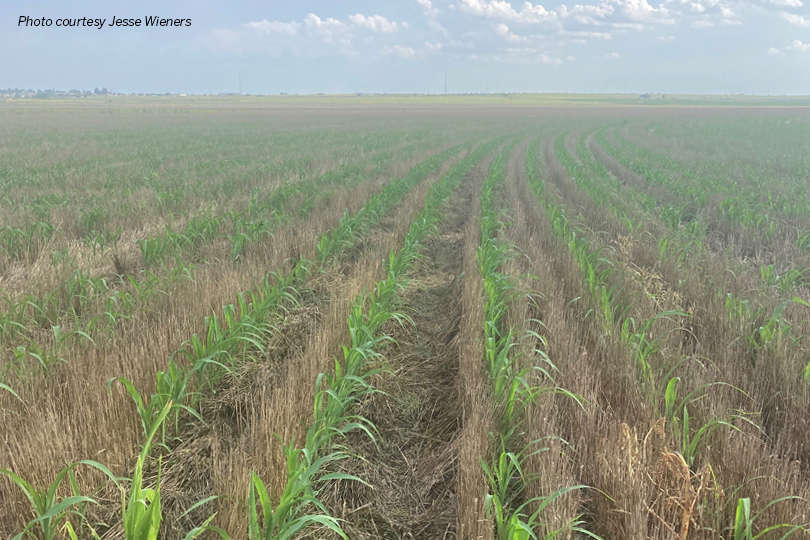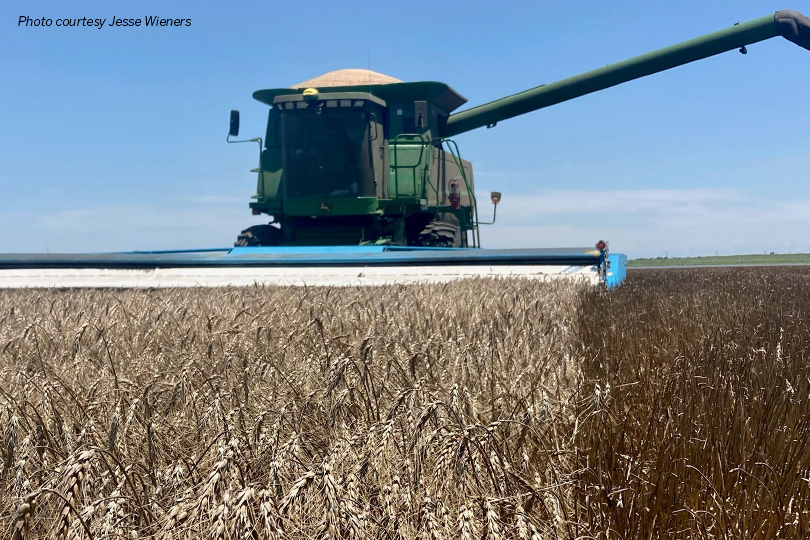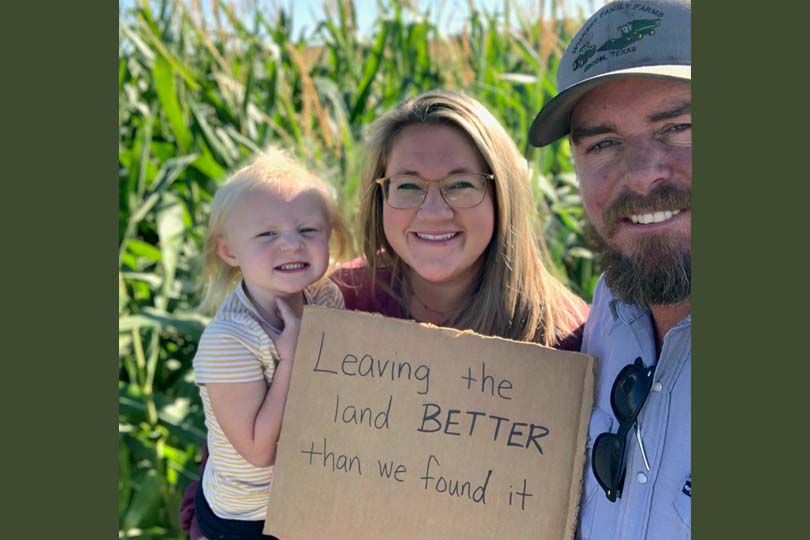By Julie Tomascik
Editor
Agriculture has a strong history of sustainability and doing more with less. And in the Texas Panhandle, Jesse and Karri Wieners continue climate-smart farming practices on their family’s farm.
“The soil’s different on each of the farms, so we have to make some changes for that as we go,” said Jesse Wieners, who grows cotton, wheat and grain sorghum. “But we have been no-till farming for nearly 10 years now.”

This is 90-day corn planted behind the combine into the stripper header straw.
No-till farming is a conservation practice used to reduce soil disturbance and erosion, as well as increase soil biological activity. It’s one of the many ways farmers increase soil health and keep farms sustainable.
“We can lose one inch of moisture for every tillage pass,” he said.
And that one inch of moisture is extremely important in the Panhandle, where the average yearly rainfall is about 17 inches.
“That one inch of moisture can generate an extra four to five bushels of yield per acre, which might not sound like a lot. But if you looked at four or five bushels an acre over a lot of acres, it adds up pretty quickly,” Jesse said.
The organic matter left from previous crops helps keep the ground shaded and the soil in place, which is necessary for the Texas Panhandle climate.
Because there are two things for certain: the wind will blow and the cotton will grow.
“We don’t get a lot of rainfall. On top of that, we’re windy a lot. We have lot of heat with wind, and it’s just like a blow dryer blowing on you crops, blowing on our soil,” he said. “Whenever you have that blow dryer effect on those hot days with the wind blowing, we lose lots of moisture, and the crops deteriorate quickly.”
And the Wieners are continually looking for ways to improve. The couple recently bought a shelbourne stripper header to leave more crop residue behind. The header strips just the seed off of the plant and leaves the wheat stubble in the field.

This is the shelbourne stripper header. It strips only the grain, leaving the stubble in the field.
“The stubble is anywhere from knee high to waist high, just depending on how tall your crop is,” he said. “This header actually speeds up harvest, because you’re not taking in more of the crop. You’re just taking the grain. We’re able to get about 20% more done per day, so it speeds up our efficiency a lot.”
Texas farmers and ranchers, like the Wieners, implement sustainable practices in many ways, helping to minimize their impact on the environment.
“I believe farmers are actually helping to make the environment better. Our crops are sequestering carbon, and farmers are taking good care of the land and natural resources,” Jesse said. “I believe farmers are actually the answer, not the problem, to climate challenges.”
And for Karri, whose family has been farming for generations, it’s important to leave the land better for the next generation.
“We hope our kids will want to farm one day, and even if they don’t, we want to make sure we have left the land in better shape for the next farmer,” she said. “The soil and natural resources are essential to growing our food, fiber and fuel. We must be good stewards of the land and continue to find ways to be more efficient.”
Advances in agriculture and sustainability aren’t new. Farmers and ranchers, like Jesse and Karri, are making improvements, conserving resources and trying to better their efficiency—all so that the soil they toil in will be healthy, fertile and ripe with possibility for the future.
For more information on agriculture’s sustainability and climate-smart farming, visit fb.org/sustainability.
Meet Jesse and Karri Wieners in this short video.

